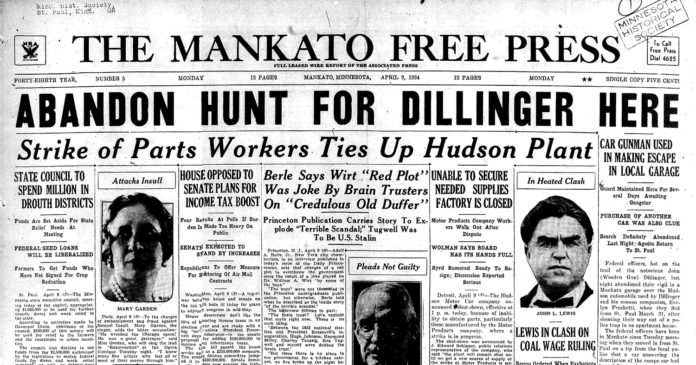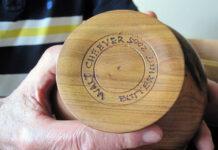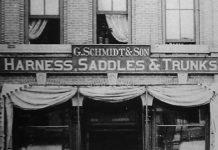The web of crime during the 1920s and 1930s, gripped the nation.
Prohibition and the Great Depression made professional criminals richer and bolder. Bank robberies, bootlegging, and gangland assassinations involving notorious criminals include names such as Dillinger, Machine Gun Kelly, Babyface Nelson, and Ma Barker. There are also many stories of minor players that intertwine with these major players. The story of Jack Kooser, who had been a notorious character in Mankato, is one of the minor players caught up in this tangled web of crime.
[Profile of a Bootlegger – Mankato’s Gangster Ties Part 1]
The second autopsy of William (alias Tommy Barrett) O’Brien’s body after exhumation in late 1927, failed to find a bullet that police had hoped would prove Art “Wicky” Hanson’s claims of self-defense. Later, while imprisoned in Stillwater, Hanson claimed he had been “framed” by police who, he charged, promised him freedom if he confessed to the killing of Barrett and his wife and sister-in-law, and named Barrett responsible for other killings in Minneapolis.
Jack Kooser
Jack Kooser had been charged with grand larceny for robbing a jewelry store in Blue Earth, MN in 1927 and released on $5,000 bail. Just weeks after the murder of his second wife, Lillian, in August that year, the Farmers and Merchants National Bank of Vinton, Iowa was robbed and Kooser was suspected of being involved.
It wasn’t until July 1928 that Kooser was arrested in Ames, Iowa, as a suspect in the Vinton robbery. He was also wanted for a bank robbery at Spring Valley, MN, but was cleared of the charges for both of these robberies.
In November, Kooser married his third wife, Violet Bolvig, in Algona, IA. Violet was 23 years old, the daughter of a minister from North Mankato and employed as a hairdresser. Their marriage license lists Jack’s occupation as a salesman.
In a series of raids by federal prohibition agents in 1929 police arrested eleven Mankato area residents—among them were Jack Kooser and Jimmy Page. They were charged with sale, possession, transportation of liquor, conspiracy to violate the prohibition law, and nuisance violations. In January 1930, a federal judge sentenced them to two years in the federal penitentiary at Leavenworth for liquor violations.
Tommy Carroll
It was in Leavenworth where the men met Tommy Carroll, a bank robber, auto thief and sometimes Dillinger gang associate, who was serving a two-year sentence for transporting a stolen auto across state lines. Carroll, often reprimanded for breaking prison regulations, was released in 1931.
Kooser and Page were released from Leavenworth in January 1932 and they returned to Mankato. When Kooser tried to obtain a license to operate a restaurant in Mankato and was denied, he called on his friend, Tommy Carroll, now living in St. Paul. Carroll obtained the license under his own name and turned the restaurant over to Kooser.
Page and Kooser had an interest in several local taverns including The P.K. Lounge, The Hunters Club, and The Frolics, a night club just north of Mankato. The P.K. Lounge was only in business for a couple of years when it became The Bodega and remained so until urban renewal in 1973. The Hunter’s Club was located at 117 E. Walnut Street next to the State Theater.
Connections with John Dillinger
Meanwhile, the notorious John (Wooden Gun) Dillinger and his girlfriend Evelyn Frechette came to St. Paul from Chicago, where they teamed up with Homer Van Meter, Lester (Baby Face Nelson) Gillis, Eddie Green, and Tommy Carroll, among others. The gang prospered as they continued robbing banks of large amounts of money.
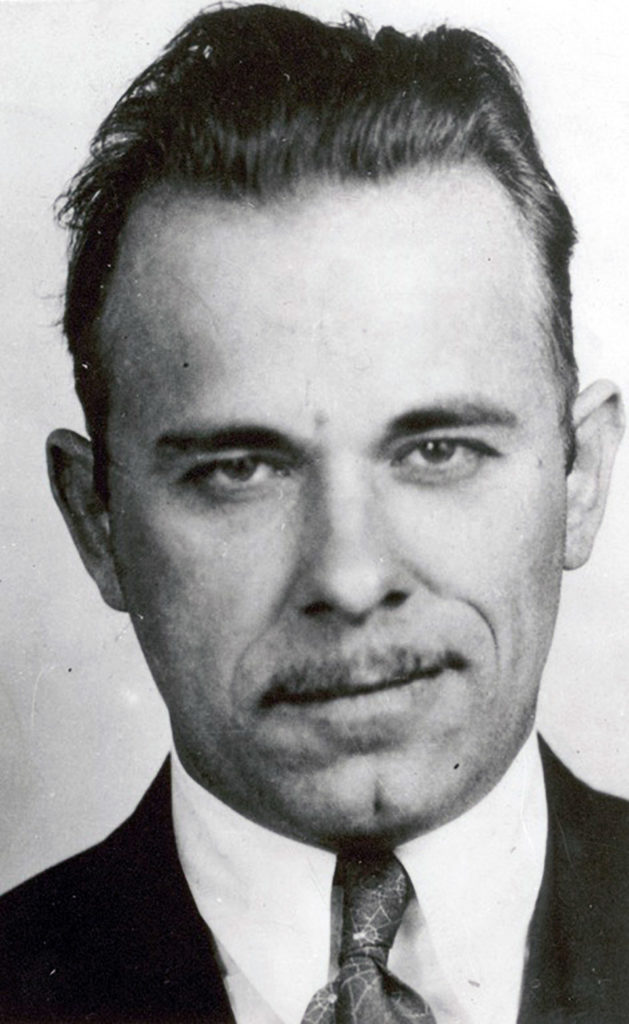
On March 30, 1934, the FBI received a tip of two suspicious tenants at the Lincoln Court Apartments on Lexington Avenue in St. Paul. The next day an agent and police officer knocked on the door of the apartment. Evelyn Frechette opened the door, but quickly slammed it shut. The agent called for reinforcements to surround the building.
Agents saw a man, later identified as Homer Van Meter, enter the hall near the apartment Dillinger was staying. Upon questioning him, Van Meter drew a gun. Shots were exchanged and Van Meter fled the building. Suddenly the apartment door opened, and the muzzle of a machine gun began spraying the hallway. Under cover of machine gun fire, Dillinger and Frechette escaped through the back door and fled in a green Hudson sedan.
Two days later, Mankato police notified federal agents that a car was found answering the description of Dillinger’s escape car. Two men had left the car at Clements Auto Service on Main Street with instructions to repaint, file off the name of the car maker, change the hub caps, install new taillights and attach license plates with wingnuts, for easy removal. They ordered the work be completed as soon as possible. Police believed these two men were Dillinger associates, Tommy Carroll and Homer Van Meter, and kept round the clock surveillance of the garage in the hope they would return for the car.
The same day, a new Ford sedan was purchased from a garage in Mankato by a man who ordered it be delivered at a street corner near the Circle Inn in North Mankato. The garage had someone follow their car salesman, Stewart Johnson, across the river to the Circle Inn to be sure he was safe. The man, believed to be Carroll, paid for the car on the spot with small bills, an additional clue to the activities of the gang.
According to the police investigation, Tommy Carroll was employed at a Mankato restaurant operated by Jack Kooser and Jimmy Page. Four Mankato men, Jimmy Page, Jack Kooser, Pat Coulter and Stewart Johnson (the man who sold the Ford car) were taken to St. Paul for questioning and released without charges.
Deadly summer
When the Dillinger car wasn’t picked up at the garage, federal agents took it back to St. Paul. The search for Dillinger, named “Public Enemy Number One” by J. Edgar Hoover, continued, but the summer would prove deadly for Carroll, Dillinger, and Van Meter.
On June 7, police shot and killed Tommy Carroll at a gas station in Waterloo, Iowa. The gas station attendant noticed a stack of license plates piled in the back seat of Carroll’s sedan and called police. When officers identified themselves, Carroll reached for his gun. One of the officers punched him in the face, knocking him backward and shot him four times, mortally wounding him.
On July 22nd, John Dillinger was shot to death by FBI agents outside Chicago’s Biograph Theater. Dillinger gang member, Homer Van Meter was shot to death in a police ambush in St. Paul on August 23, 1934.
Jack Kooser’s life of crime would soon catch up to him too. Kooser had been operating a roadhouse with Jimmy Page but sold his interest sometime in the spring of 1935. Newspaper reports also show he had been charged with second degree grand larceny in connection with recent local house-break-ins.
In the early hours of July 31st the Olmstead County sheriff was called to the secluded farm home of bachelor farmers, William and Henry Witte in Viola Township, just east of Rochester.
The farmers were awakened by two gunmen peppering their home with a dozen bullets and demanding entrance. When they refused, the robbers battered the back door with a fencepost and fired more gunshots into the house. When one of the bullets struck Henry (age 67) in the right arm, his 65-year-old brother William sent a shotgun blast through a screen door. The gangsters retreated and escaped in a speeding car.
The Witte’s called the sheriff from a neighbor’s house after they found their telephone wires had been cut. When the sheriff searched the premises, he found a clothesline had also been cut and suspected the robbers planned to use it to bind their intended victims. When questioning the Witte brothers, he learned that earlier in the day two men stopped at the farm representing themselves as game census takers, however no census was being taken at the time.
About a mile from the farmhouse, the gangsters had plunged into a ditch off a sharp curve in the road and escaped in a second car after the crash. When their wrecked, blood-stained car was discovered, its speedometer was stopped at 50 miles-per-hour. A clip of bullets, the same as those found in spraying the Witte brothers home, were found in the abandoned car.
A bad end for Kooser
Five days later on August 4th, Melvin C. Passolt, superintendent of the state bureau of criminal apprehension, received an anonymous call with a tip that Kooser’s body was “dumped” near Stillwater. When Passolt asked for a more definite description of the location, the mysterious caller told him; “You ought to be able to find it. It’s good and juicy by now.”
The badly decomposed body of a man was found on a little-used country road about four miles from Stillwater. Beside the body lay a new auto jack in a cloth case, and a driver’s license card bearing Kooser’s name and the Mankato Saulpaugh Hotel as his address. The body was clothed in a gray suit and a straw hat lay nearby. Kooser was said to be wearing a gray suit and straw hat the last time he was seen in Mankato.
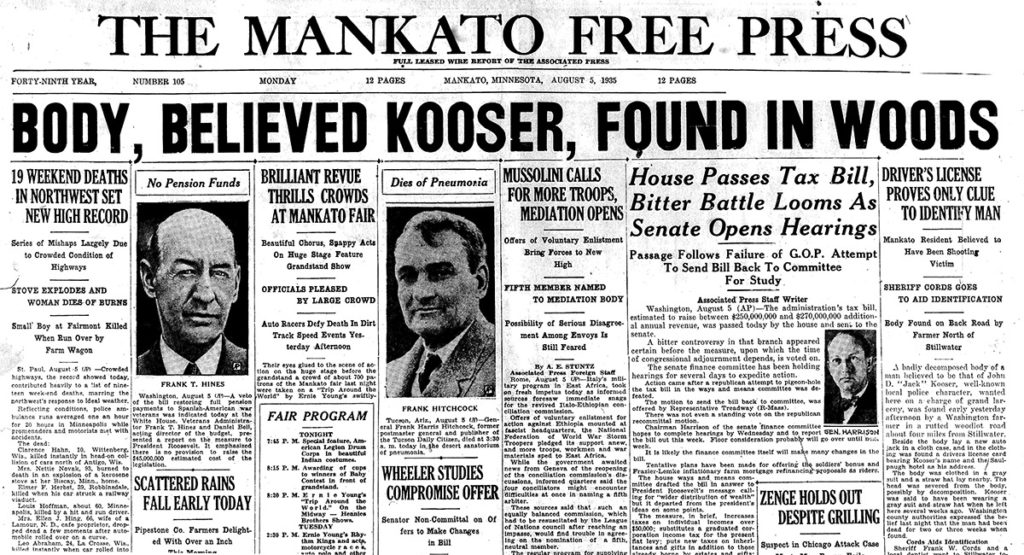
The initial theory of the motive behind the slaying was that the man may have been one of those who tried to rob the home of the Witte brothers near Rochester. Police believed he was critically hurt in the high-speed crash and that he was loaded into another car, presumably his own coupe. He may have been alive and was left there alone to die by his cohorts. The auto jack probably fell out of the car as the body was dragged out.
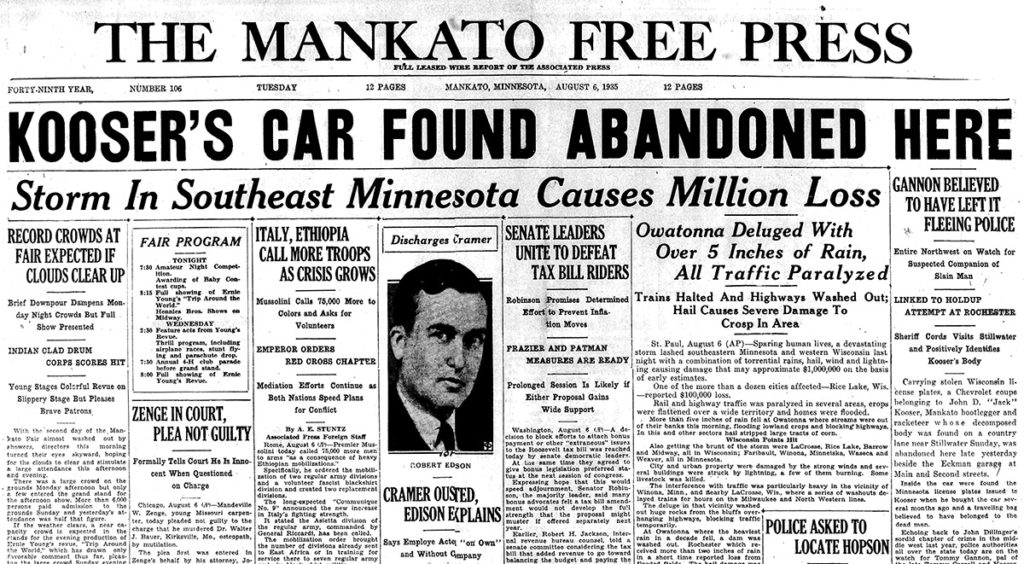
Washington County coroner, Dr. E. V. Strand, conducted the autopsy and said the body was so badly decomposed that the features were unrecognizable. He was quite certain that Kooser was not dead when abandoned. He drew his conclusion from the condition of the grass where Kooser’s body was found. Indications in the grass were that he struggled and tossed in pain. The coroner’s verdict was death occurred from a punctured lung on or about July 31st from injuries received in an auto accident. Kooser’s body had three fractured ribs, a fractured leg and scalp injuries.
Blue Earth County Sheriff Frank Cords and a local dentist were called to Stillwater to determine if indeed the body was that of Jack Kooser. Once identification was definite, his wife, Violet claimed the body which was brought back to Mankato for burial in Mount Olivet Cemetery.
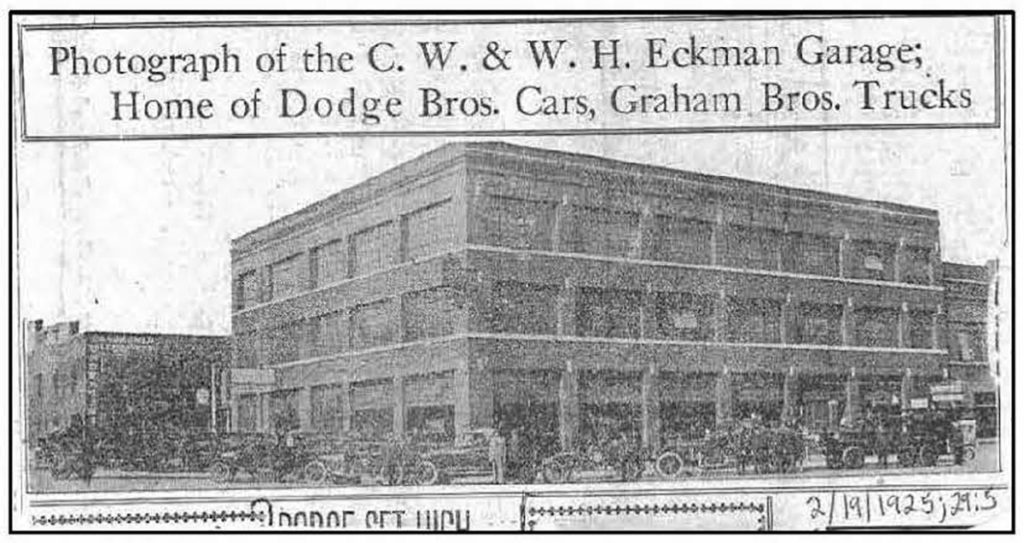
While authorities were working to identify Kooser’s body in Stillwater, a Chevrolet coupe belonging to John D. “Jack” Kooser, carrying stolen Wisconsin license plates, was found abandoned at the Eckman garage on East Main Street in Mankato. Inside the car were Minnesota license plates issued to Kooser when he bought the car several months before and a traveling bag belonging to him.
Tommy Gannon
Finding Kooser’s car prompted a man hunt and authorities across the state were advised to be on the look-out for Tommy Gannon, a pal of the late Tommy Carroll and Jack Kooser, and an associate of Dillinger’s. Police believed Gannon was the anonymous caller, that he brought Kooser’s car back to Mankato and abandoned it across the street from the Clements Auto Company from where the car was purchased. All the tools had been removed from the car and the rear deck appeared to have been washed out with a hose.
Tommy Gannon (known as The Torturer) eluded the police until he was arrested June 30, 1936 in Minneapolis for causing a “rumpus in a café.” He was turned over to Olmsted County authorities for prosecution for the attempted robbery and assault of the Witte brothers. He denied ever having been in Olmsted County and claimed he had loaned his car to some other men while under the influence of liquor.
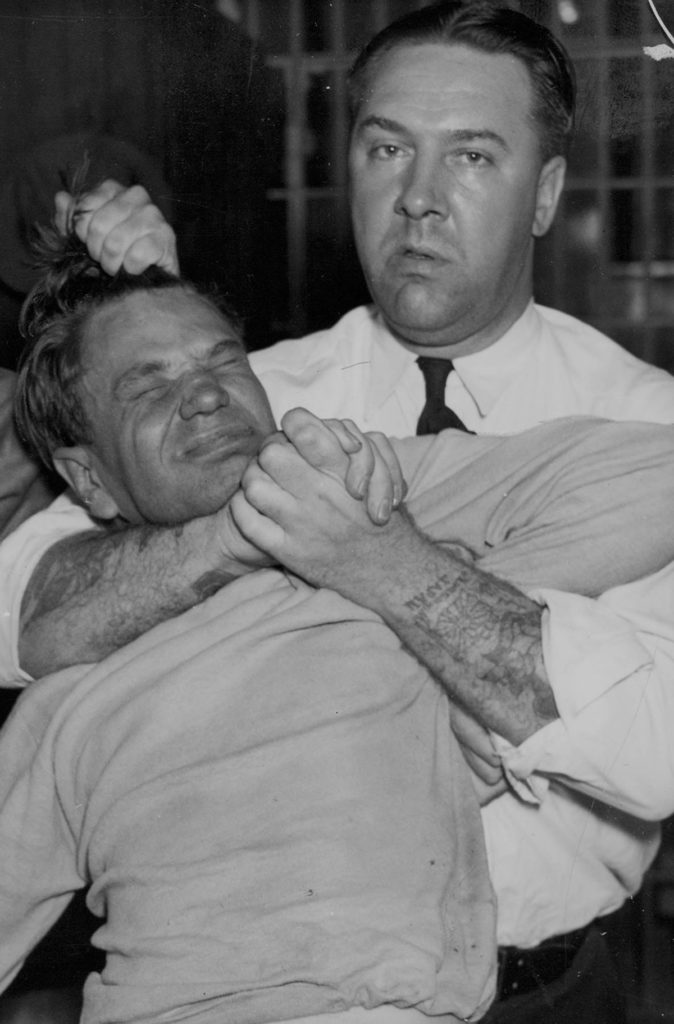
He was returned to St. Paul to stand trial for the robbery of a Summit Avenue home on May 21st. He pleaded guilty in Ramsey County district court and was sentenced to eight years in the Stillwater State Penitentiary.
On Nov. 15, 1943 Gannon was extradited to Wisconsin for the Union State Bank robbery at Amery, Wisconsin in 1933. At the trial, held at Balsam Lake, Wisconsin in April 1944, the ex-convict acted as his own attorney, even though he had no legal training. Gannon had gone deaf while serving in Stillwater and every question and answer had to be typed and handed to him on a piece of paper.
When the trial opened, he threw the courtroom into an uproar by kicking over a typewriter and shouting at the jurors saying he hoped they would all “die before morning.” He was ordered to be handcuffed as he ranted at the judge, jury and prosecutor saying that he would “make every ruckus and disturbance possible to delay progress of this trial.” Gannon shouted at Judge Daly “You are the most insidious rat I have ever seen.”
Witnesses testified that four masked men broke into the Union State Bank before it opened for business and forced all the workers to lie on the floor as they entered. The sole clue that linked Gannon to the crime was his fingerprint on a gun that belonged to the bank. A jury deliberated only an hour before returning a guilty verdict. He was sentenced to Wisconsin State Prison at Waupun, WI to serve a 15-40 year term.

